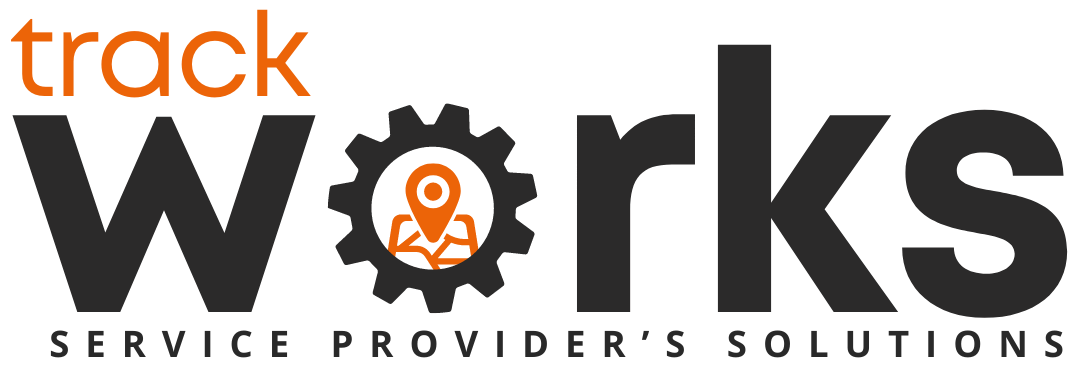Turning Field Data into Business Intelligence for 2026 Growth
In today’s competitive field service landscape, information is your most powerful asset. Every completed work order, technician route, inventory adjustment, and customer interaction generates valuable data. Yet for many service companies, that data remains underutilized — sitting in spreadsheets, disconnected systems, or outdated reports.
Transforming that raw data into actionable business intelligence (BI) is what separates companies that react from those that lead. When done right, data-driven insights can improve scheduling accuracy, reduce costs, boost technician productivity, and enhance customer satisfaction — all while driving long-term growth.
This blog explores how field service companies can leverage data analytics to make smarter decisions, streamline operations, and prepare for scalable success in 2026 — powered by Track Works’ integrated reporting and analytics tools.
1. The Shift from Reactive Decisions to Predictive Intelligence
Why it matters:
Traditional field operations rely heavily on reactive decision-making — addressing issues only after they occur. But in 2026, the winners will be those who anticipate and act early.
By turning field data into predictive insights, managers can spot inefficiencies, forecast demand, and prevent costly downtime before it happens.
How to implement:
- Collect consistent operational data across all teams and job types.
- Identify recurring performance patterns, delays, or bottlenecks.
- Use analytics dashboards to visualize productivity and asset performance trends.
Practical tip:
Start small — focus on one high-impact area such as response time, job completion rates, or travel efficiency — then expand your data strategy across operations.
2. Centralizing Data for Clearer Decision-Making
Why it matters:
Scattered data leads to confusion and inefficiency. When information lives in multiple systems — accounting, dispatching, inventory, and CRM — teams waste time reconciling it manually.
How to implement:
- Integrate your field service management platform with accounting and inventory systems.
- Establish one central dashboard for all operational metrics.
- Ensure every technician logs job details digitally in real time.
Track Works advantage:
With Track Works’ unified platform, every job, asset, and expense is connected. Real-time dashboards provide visibility across departments, eliminating silos and enabling better decisions at every level.
3. Using Analytics to Improve Technician Productivity
Why it matters:
Technician performance is the heartbeat of any field service company. Data helps managers pinpoint inefficiencies — whether it’s long travel routes, scheduling gaps, or repeated rework.
How to implement:
- Track technician time, job duration, and travel patterns.
- Analyze top performers and replicate successful workflows.
- Identify training opportunities through recurring issue patterns.
Practical tip:
Share performance metrics transparently to create a culture of accountability and continuous improvement — not punishment.
4. Turning Customer Data into Service Improvements
Why it matters:
Customer satisfaction drives repeat business and referrals. Analyzing service records, feedback, and job outcomes can reveal key insights about customer expectations and pain points.
How to implement:
- Track repeat service requests by location or equipment type.
- Use customer history data to anticipate service needs.
- Measure and report customer response times and resolution rates.
Track Works advantage:
Track Works’ analytics and service history features make it easy to analyze customer data and use it to refine service quality, forecast maintenance needs, and enhance transparency.
5. Leveraging Inventory and Cost Data for Efficiency
Why it matters:
Unmanaged inventory leads to overspending, job delays, and frustrated technicians. Data analytics helps ensure you have the right parts, at the right time, without overstocking.
How to implement:
- Review parts usage trends by job type or season.
- Track costs and tie them to specific projects.
- Use data to forecast restock cycles and reduce waste.
Track Works advantage:
Inventory tracking and accounting integration allow seamless cost control — reducing material waste and optimizing purchasing decisions based on actual usage trends.
6. Building a Data-Driven Culture
Why it matters:
Technology alone isn’t enough. Building a data-driven culture requires leadership commitment and team engagement. Every technician, dispatcher, and manager must understand the value of accurate data.
How to implement:
- Train teams to record detailed, accurate data consistently.
- Celebrate insights and wins derived from analytics.
- Integrate data discussions into monthly or quarterly reviews.
Practical tip:
When technicians see how data improves their efficiency and customer outcomes, participation and accuracy rise naturally.
7. Forecasting for Growth and Innovation
Why it matters:
Predictive analytics allows field service companies to look beyond today’s operations and plan for tomorrow’s opportunities. By analyzing trends in demand, resource use, and performance, leaders can forecast capacity and scale sustainably.
How to implement:
- Review annual performance data to identify growth trends.
- Use forecasting models to plan staffing, vehicles, and technology needs.
- Align business development strategies with data-backed projections.
Track Works advantage:
Track Works Analytics provides customizable dashboards and reports that empower executives to forecast growth accurately, manage capacity planning, and budget effectively for the coming year.
Conclusion: Data Is the New Competitive Edge
For field service companies, growth in 2026 won’t just come from doing more jobs — it will come from doing them smarter. Turning data into business intelligence transforms how leaders manage operations, allocate resources, and deliver exceptional customer experiences.
By integrating Track Works Analytics, managers gain the real-time insights needed to reduce inefficiencies, anticipate trends, and drive measurable results.
The future of field service is intelligent, proactive, and data-powered — and it begins with how you use the information already at your fingertips.




No responses yet